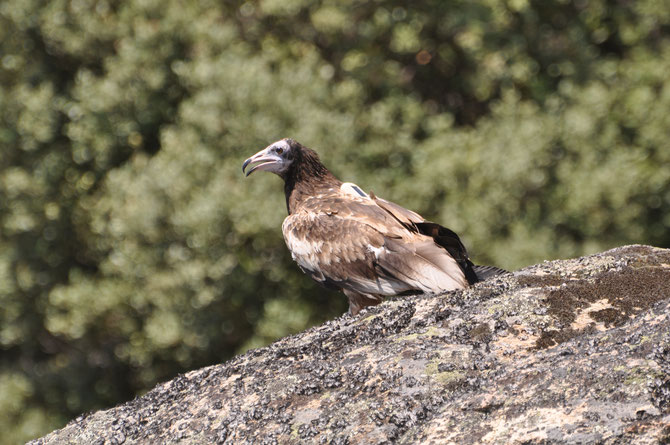
It’s that time of the year again when Egyptian Vultures embark on their long migration journey from Europe to Africa! The Egyptian Vulture is Europe’s only long-distance migratory vulture, with some individuals even covering distances of almost 11,000 km during their round trips.
Every year, adult and young birds leave their breeding and hatching places, travelling from Europe to Africa. Young birds then usually stay in Africa for at least 18 months (sometimes longer) before returning to their natal origins in Europe in the spring, and starting their annual cycle of migration to Africa in the autumn and back to Europe in the spring. After five or six years they reach sexual maturity and try to establish their own territory and form a breeding pair, often not far from where they hatched themselves. Although most Egyptian Vultures in Europe migrate, there are a few exceptions – some birds stay in Europe all year round. For example, the resident Menorca population, some individuals regularly wintering in Extremadura, and elsewhere, like the Italian Egyptian Vulture Diego that remained in Italy last year instead of migrating.
We here at the Vulture Conservation Foundation follow the movements of several Egyptian Vultures as part of different projects. From late August, several of our Egyptian Vultures equipped with GPS tags start heading south, signalling the start of the species autumn migration! Two of our GPS-tagged Egyptian Vultures, one Italian and one Portuguese, already started heading south — the latter just crossed the Strait of Gibraltar!
Sara — Italian captive-bred Egyptian Vulture
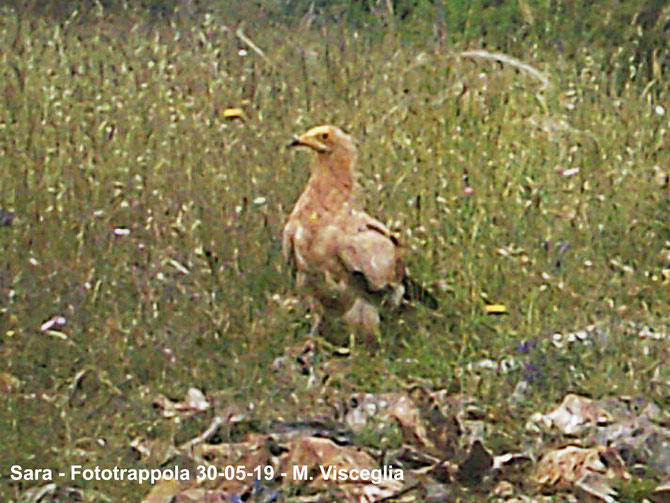
Sara hatched at the CERM Centro Rapaci Minacciati Association (Italy) in 2015 and was released in the same year by CERM on behalf of the Italian Ministry for the Environment with the support of LIPU BirdLife. This was part of an experimental release programme led by the CERM, in collaboration with us here at the Vulture Conservation Foundation (VCF) and the Egyptian Vulture Captive Breeding Network (EEP). The project tests procedures to get crucial data on the feasibility and relevance of captive-breeding and reintroduction projects with this species. Ahead of the releases, Egyptian Vultures, including Sara, are fitted with GPS tags to follow their progress and movements, helping inform these procedures.
At the end of August 2015, when Sara was around three months old, she left Italy and eventually reached Niger, amounting to a journey of almost 4,000 km. She spent four years in sub-Saharan Africa, exploring Niger and spending her summers in Northern Africa, travelling between Algeria and Tunisia before she finally returned to Italy for the first time in May 2019. Sara then settled between Basilicata and Calabria, and then wandered all over the Peninsula. In early August 2019 she had migrated back to Africa and as expected, left Niger on 18 March 2020 and reached Sicily on 28 April, after crossing Algeria and Tunisia and stopping for a day on the Island of Pantelleria.
During the spring and summer months, Sara spent most of her time in Basilicata and headed ‘home’ to explore her release area. A few days ago, she started heading south, signalling the beginning of her autumn migration journey. She already crossed the first body of water, reaching Sicily. On this Italian island, unfortunately, the threat of poaching remains significant. It has resulted in the death of other captive-bred released Egyptian Vultures in the country, so to help protect Sara, her exact whereabouts will not be disclosed in the time being. We hope she safely leaves Sicily, reaches her wintering grounds in Niger, and returns home next spring to breed!
Faia — wild-tagged Portuguese Egyptian Vulture
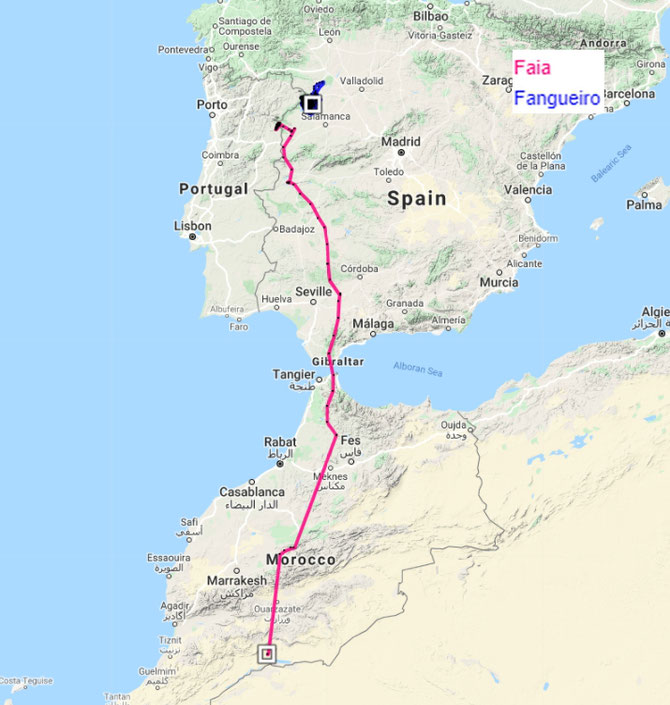
Faia is a female Egyptian Vulture that was captured at the Escalhão supplementary feeding site in June 2017 as part of the LIFE Rupis Project, and bred successfully in the Águeda valley, on the Spanish side of the international river. Since then, we’ve been tracking her autumn and spring migration every year. This year, on Friday, 21 August, Faia signalled the start of her migration as she left the Douro and started heading south. Then, on Monday, 24 August, she successfully crossed the Strait of Gibraltar and is now making her way south through Morocco. Usually, we lose track of Faia when she leaves Morocco and enters Algeria, probably because she is flying into an area with no GSM coverage in the desert until she resurfaces again in another region, often in Mali. GSM coverage is fragmented in the desert, and the experience that we have with the birds tagged in LIFE Rupis is that we often are without notice of them for some days, weeks or even months.
Fangueiro — rescued and released juvenile
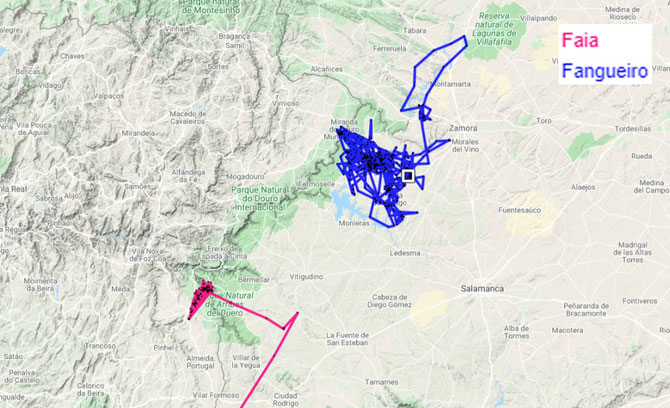
The life of the Egyptian Vulture Fangueiro started off on the wrong foot from the very beginning, but he got a second chance! Found weak at Fão and with problematic feathers after experiencing severe hunger in the nest, Fangueiro was rescued in autumn of 2019 and spent almost a year in recovery, with lots of operations and treatments to grow healthy feathers while also getting new ones through imping (implementation of features from another bird). Thanks to the efforts of the Instituto da Conservação da Natureza e das Florestas, Universidade de Trás-os-Montes e Alto Douro (UTAD), CIARA rehabilitation centre, Sociedade Portuguesa para o Estudo das Aves (SPEA) and the Vulture Conservation Foundation (VCF), Fangueiro made a full recovery, was tagged with a GPS-tag and was released on 13 July 2020 at the Douro within the LIFE Rupis project. The project team has been closely following the movements of this young Egyptian Vulture who had a troublesome beginning, to see how he is adapting to the wild and intervene if he needs help again.
Following his release to the wild, Fangueiro has been exploring the surrounding areas. He even visited a LIFE Rupis feeding station for scavenging birds, located in the municipality of Mogadouro, and managed by Palombar – Conservação da Natureza e do Património Rural.
He seems to be adapting very well to the natural environment and effectively developing his food exploration capabilities. Now the question remains whether Fangueiro will attempt to migrate to Africa and if he does so, will he succeed considering his background? There is also the possibility that he will spend winter in Extremadura. His case is unique, and it will be useful for conservationists to see what Fangueiro does next. We hope that he has a long future ahead in the wild and will one day will breed successfully in the Douro.
Sign up to our newsletter and never miss any vulture news!
LIFE Rupis
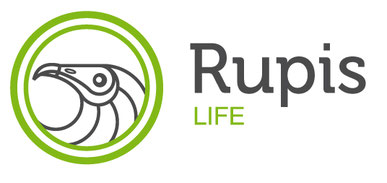
The LIFE Rupis conservation project, led by Portuguese wildlife organisation Sociedade Portuguesa para o Estudo das Aves (SPEA), and funded by the European Union’s LIFE Fund and the MAVA Foundation, is working in the cross-border Douro region of Spain and Portugal to protect and strengthen the populations of Egyptian vultures and Bonelli´s eagle. With around 135 breeding pairs, the region has one of the largest population of Egyptian vultures in Europe. Creating a network of feeding stations, improving habitat and nesting sites as well as tackling the major threats of electrocution from electricity pylons and illegal wildlife poisoning, the LIFE Rupis project will strengthen the population and improve breeding rates.







